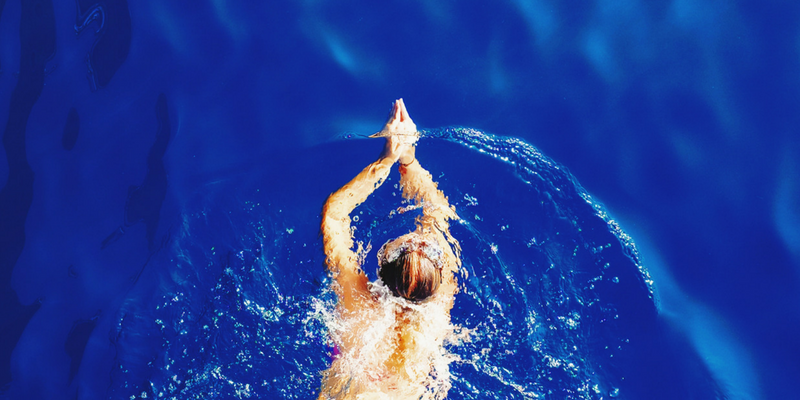
As the weather turns cooler, more people are looking to indoor pools for their daily workout. Many competitive swimming teams—clubs, schools and colleges—are starting their seasons now.
We think it’s no surprise swimming is such a “splash”—its reputation as a low-impact exercise means athletes tend to turn to it when they’re injured. But before you jump in, we want to warn you that swimming is not an injury-free activity.
One common condition we see here at Core PT is the Swimmer’s Shoulder. This is an umbrella term to cover a range of injuries that are caused by overuse of the shoulder in the water. Here are a few things you can do to prevent it:
Posture
This includes both in and out of a pool. Pressure on the shoulders and chest can lead to overuse. Walk with your shoulders rounded, and sleep on your back at night to put it in alignment with your neck.
During a freestyle stroke, make sure your shoulders are back and your chest is forward. You head should be looking forward and down, letting the water crest above your eyebrows.
Spinal strength
The thoracic spine is located on your upper and middle back, and is crucial to flexibility and extension. A poor t-spine can cause you to overuse your hips as you rotate to breathe, which causes your shoulders and chest to roll forwards and inwards.
To strengthen this part of your body, do what’s called a thoracic windmill. This is when you lay on your side, with your top leg bent just below a 90 degree angle. Start with your arms straight out and your hands clasped together. Then take your top arm and rotate it in a circle around your body, like a windmill.
Work on shoulder strength outside of the pool
We talked in an earlier blog about what happens when you injure a rotator cuff. Often, this can occur from overuse, and swimming definitely uses those muscles! Make sure you strengthen your shoulder muscles outside of the pool.
One way to do this is with an exercise called the “reverse fly.” You stand with your feet shoulder-width apart and your knees slightly bent. Bend slightly forward at the waist with a small weight in each hand. Extend your arms away from your body, as if you’re flapping like a bird. Don’t bend your elbows, but DO make sure you squeeze your shoulder blades as you do so.
Be safe and have fun! We know how enjoyable the water is, and we want you to experience it injury-free. If you do experience swimmer’s shoulder, our upper-body pain management program can have you back in the pool in no time.
